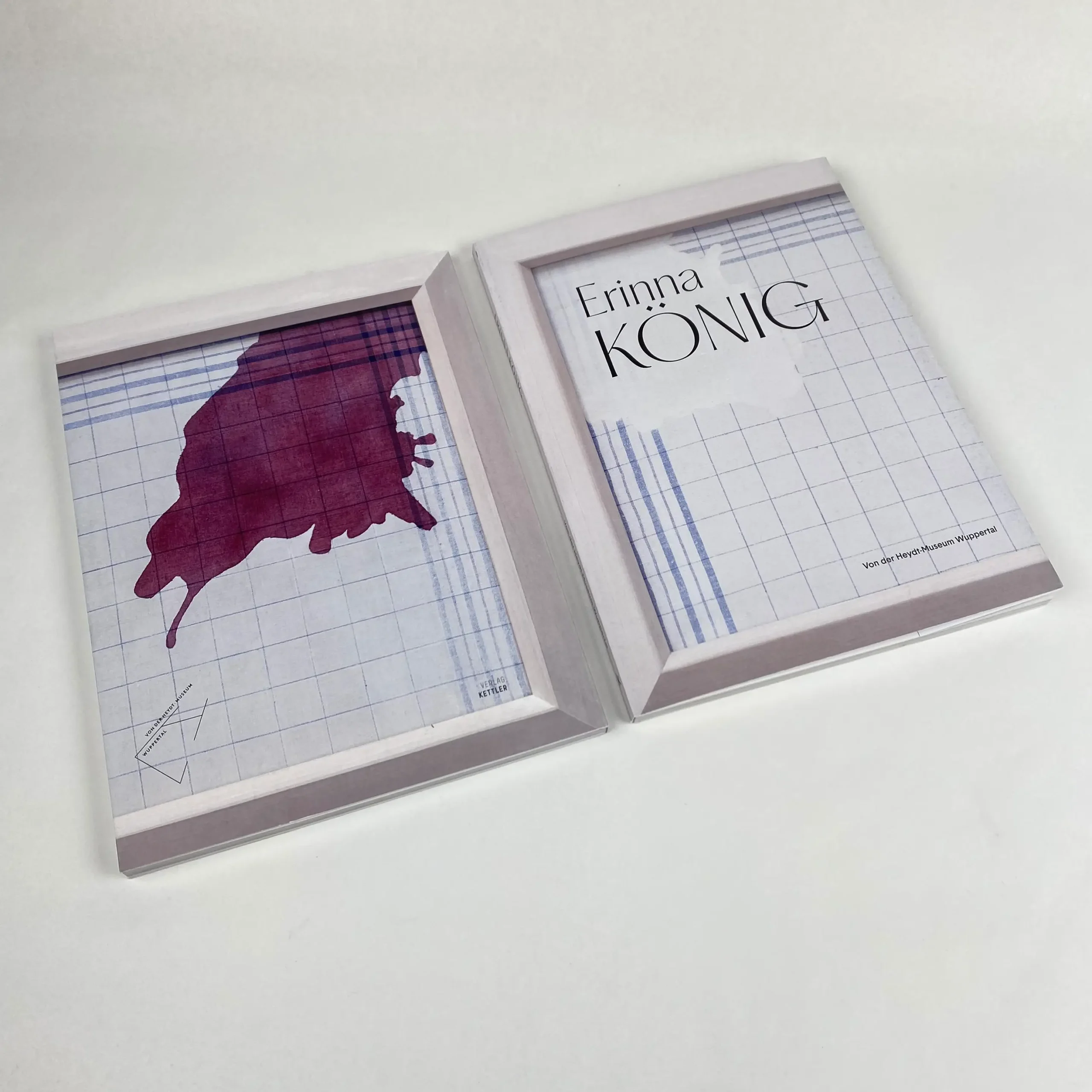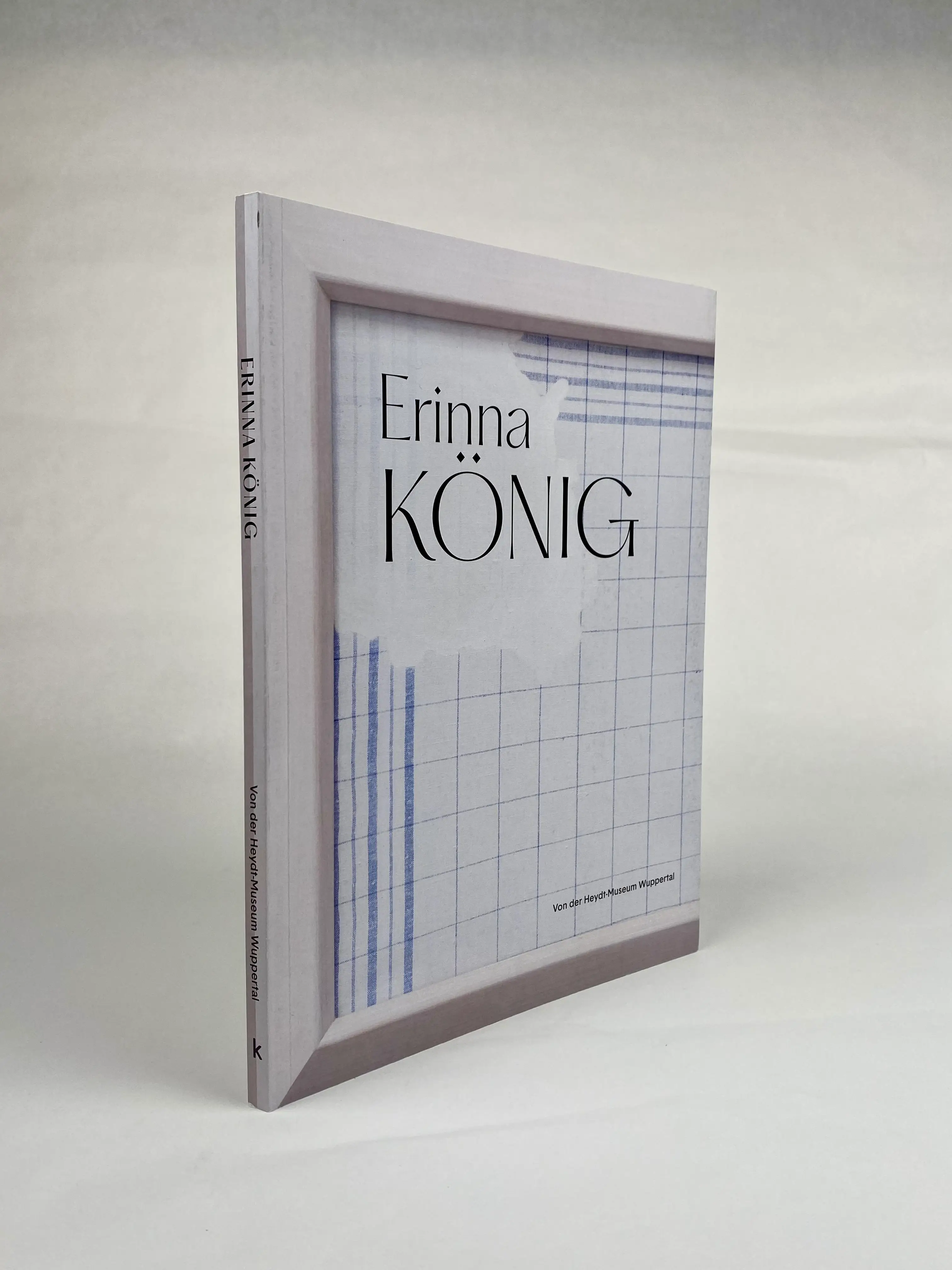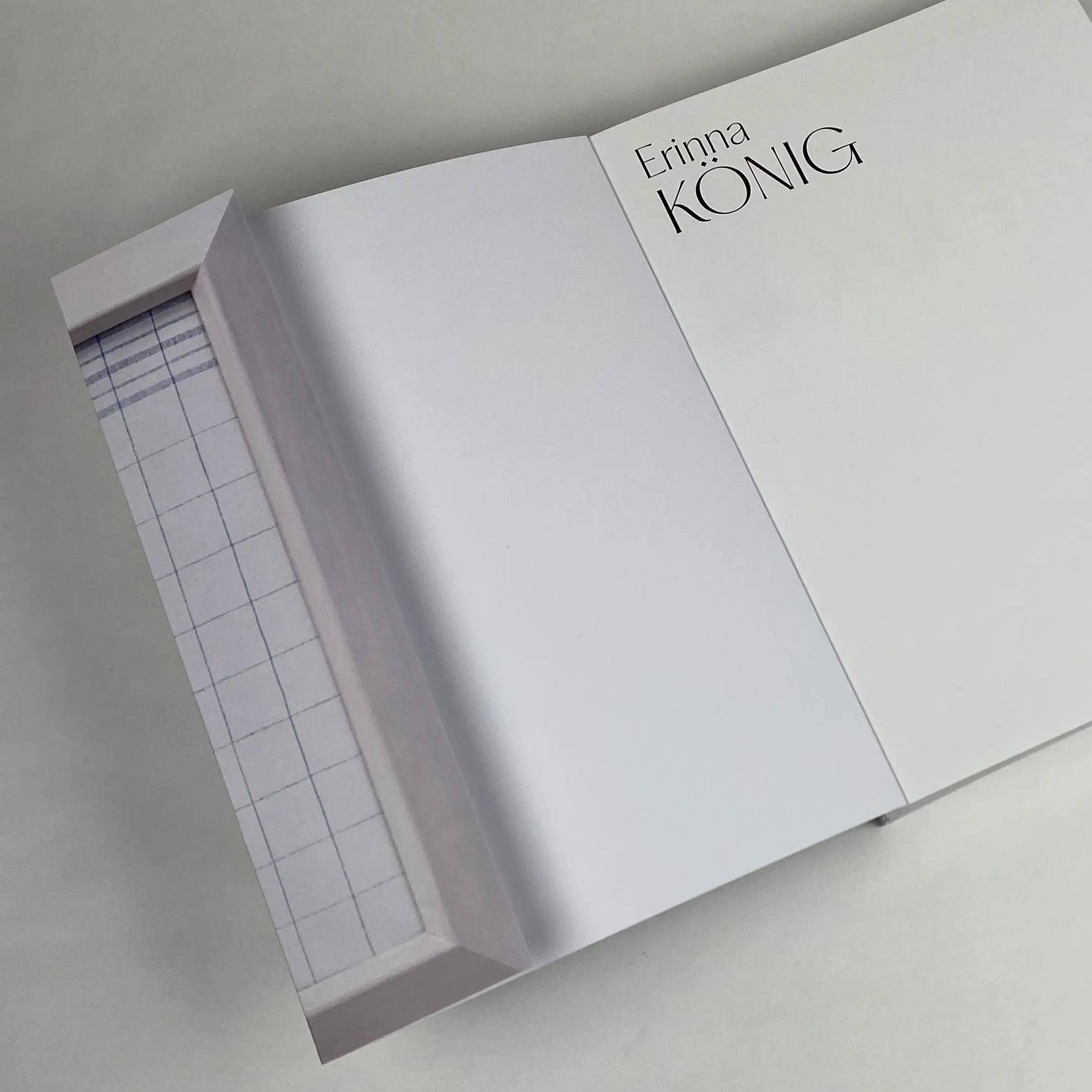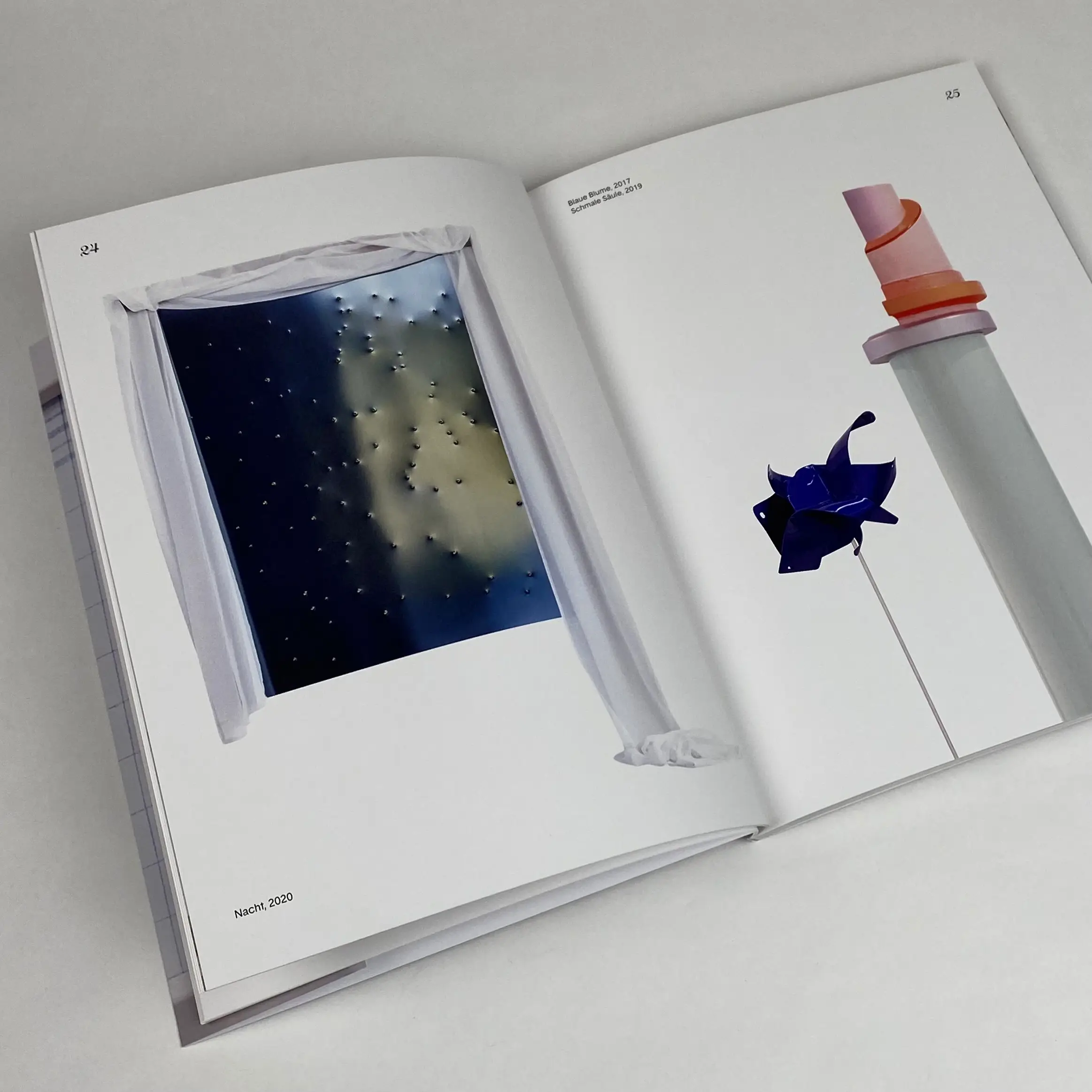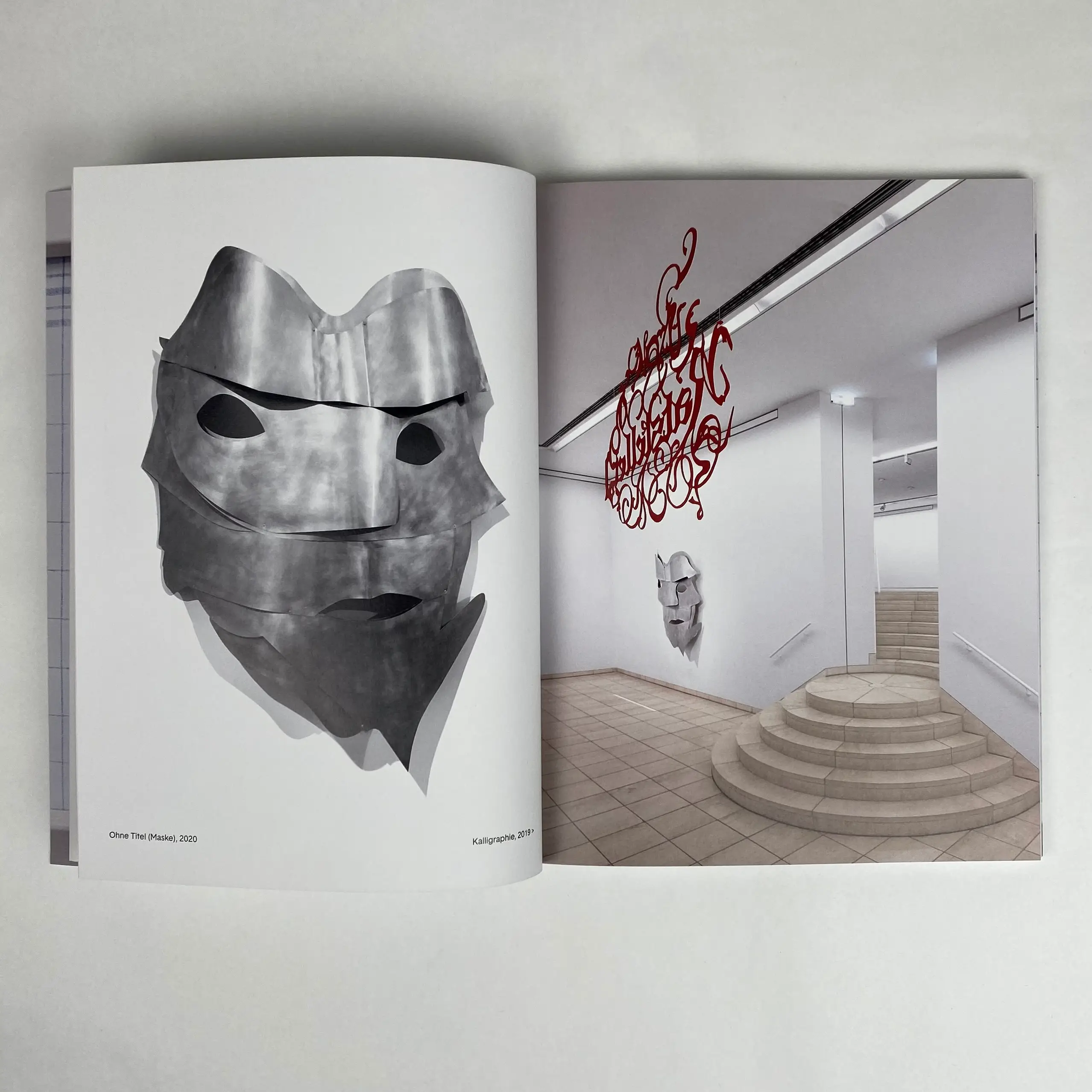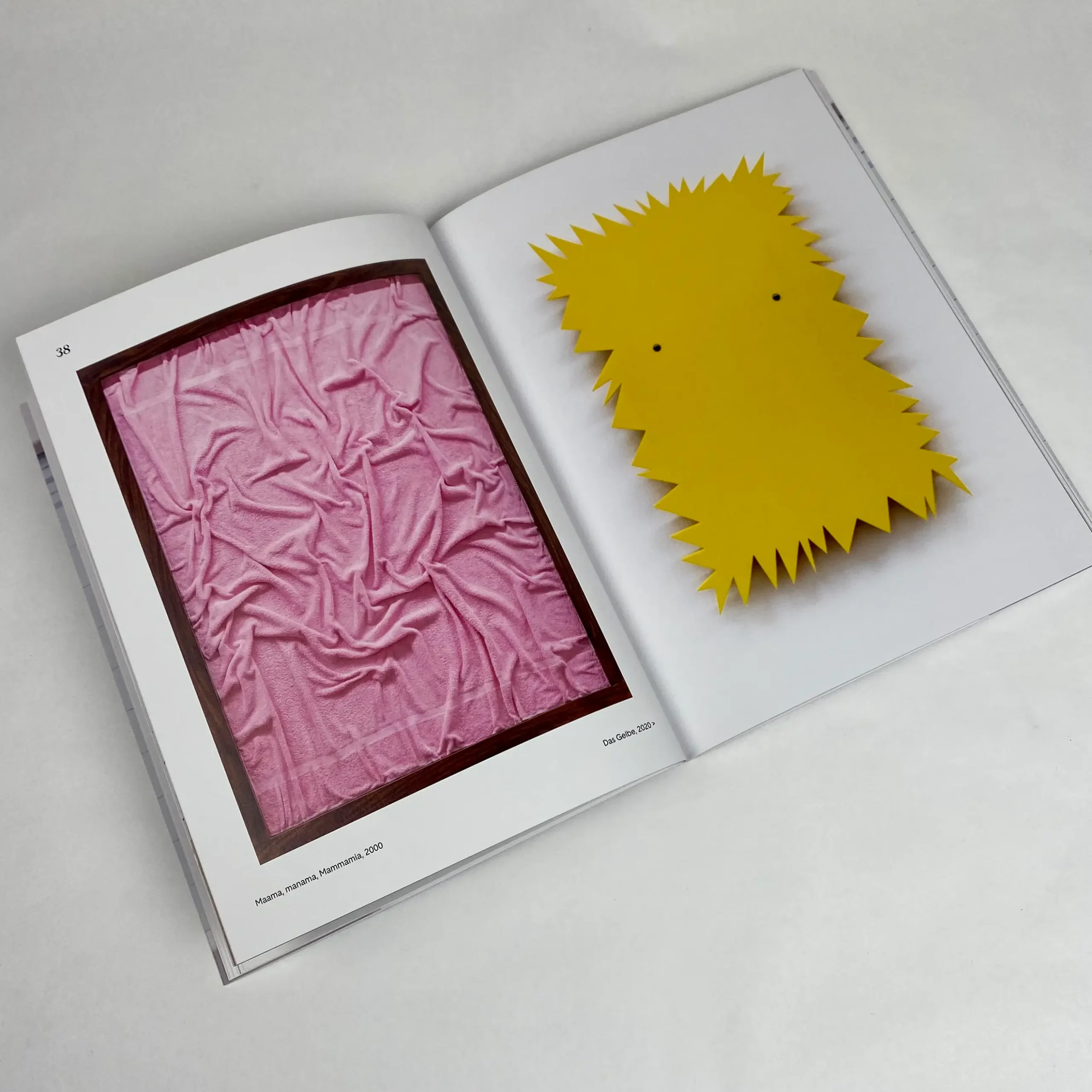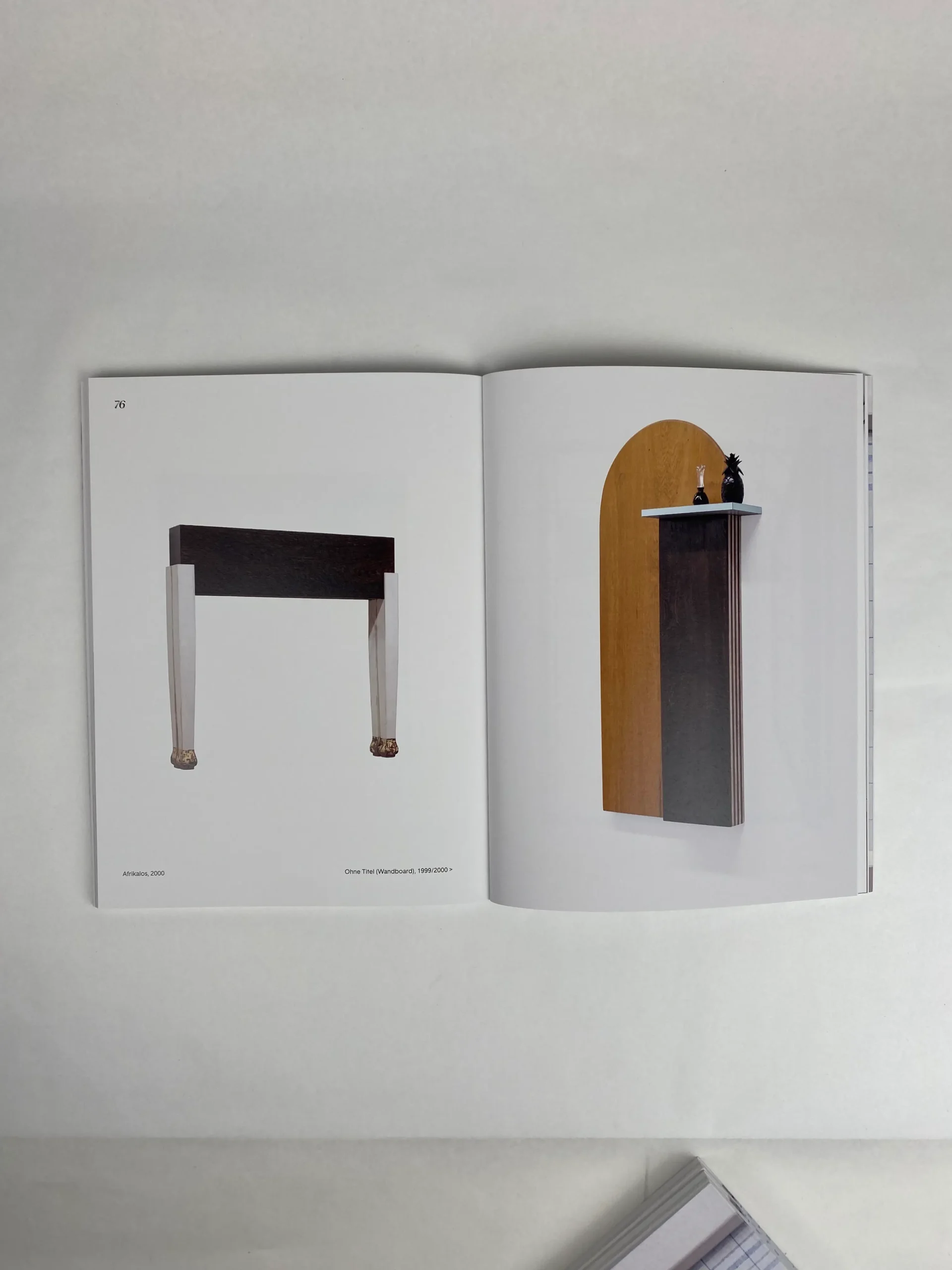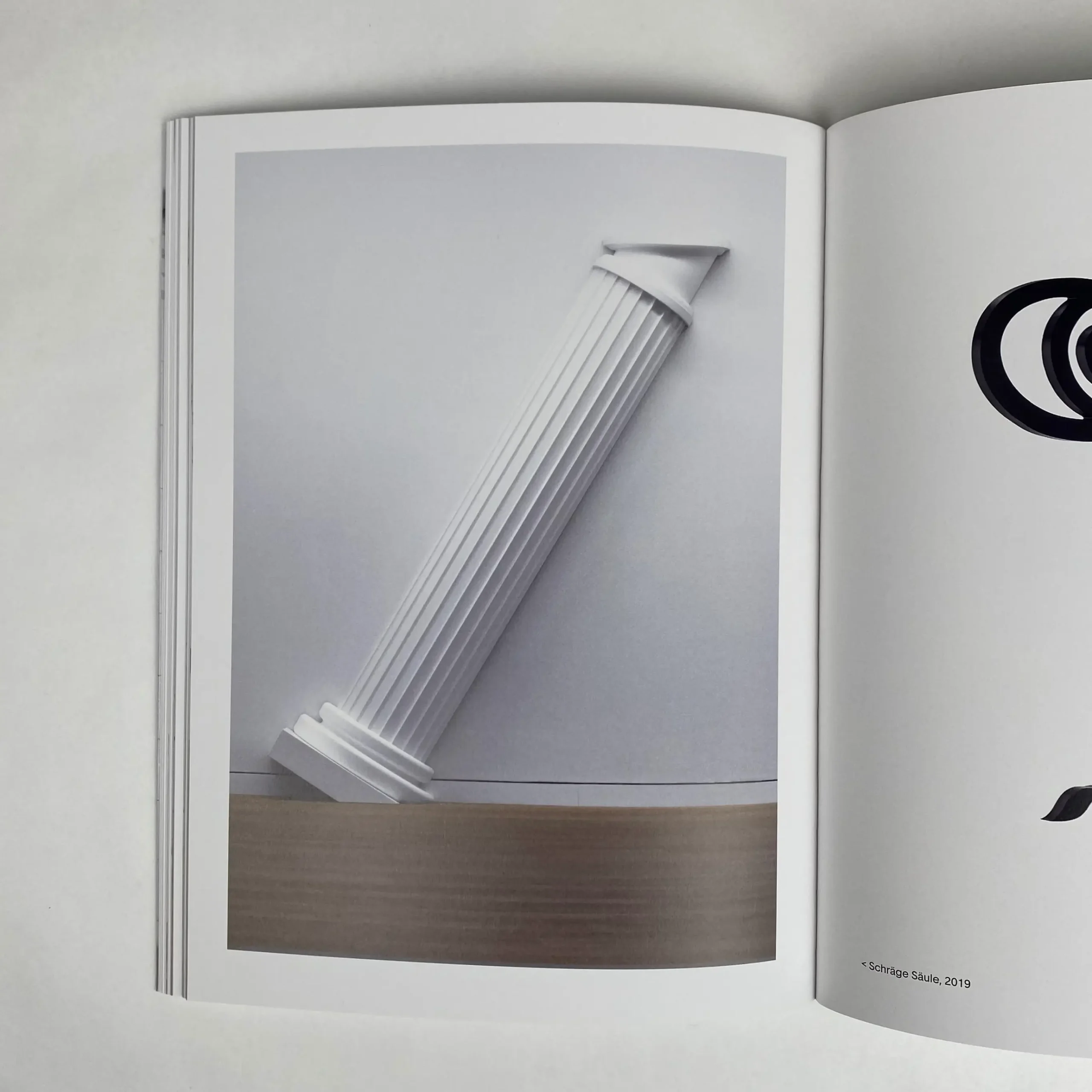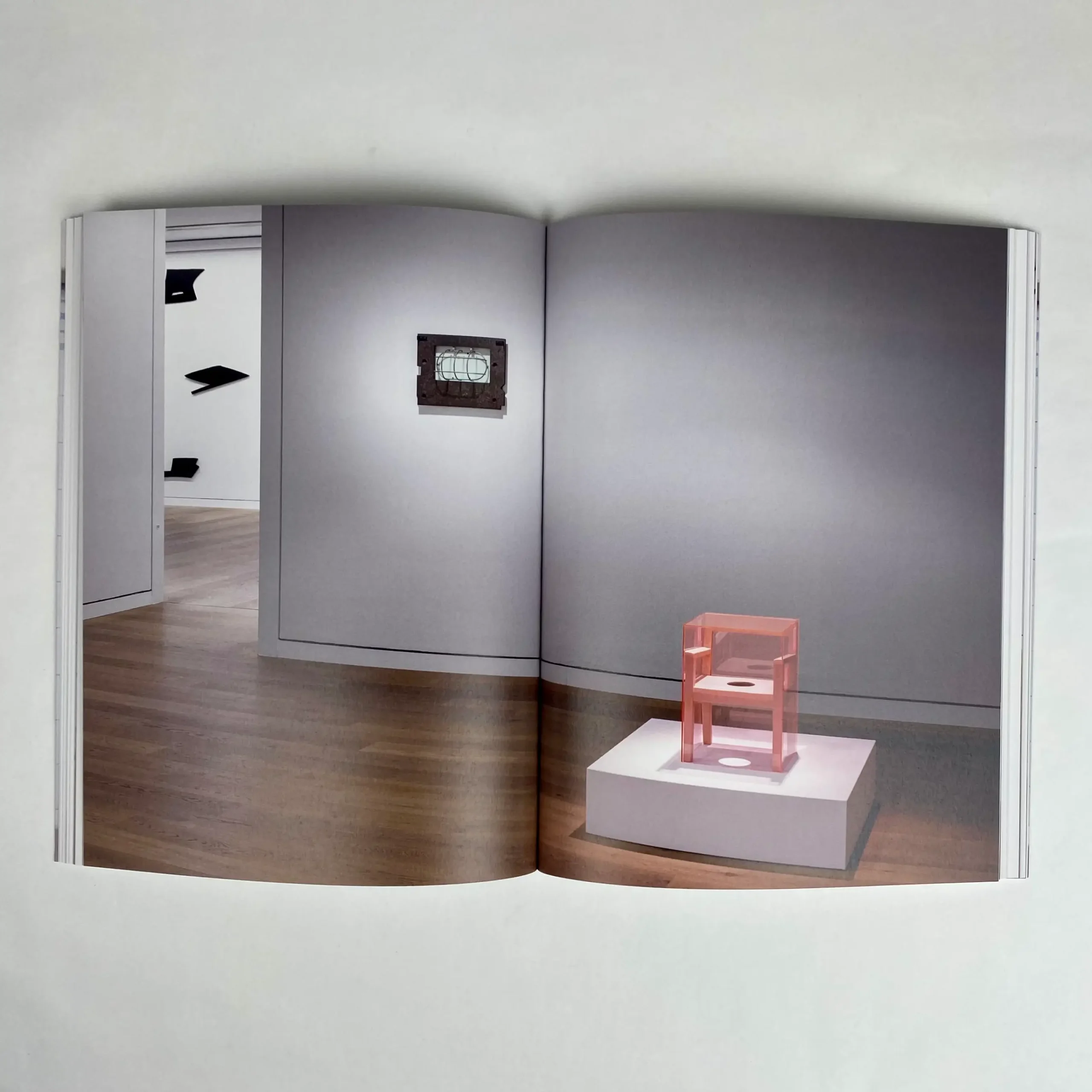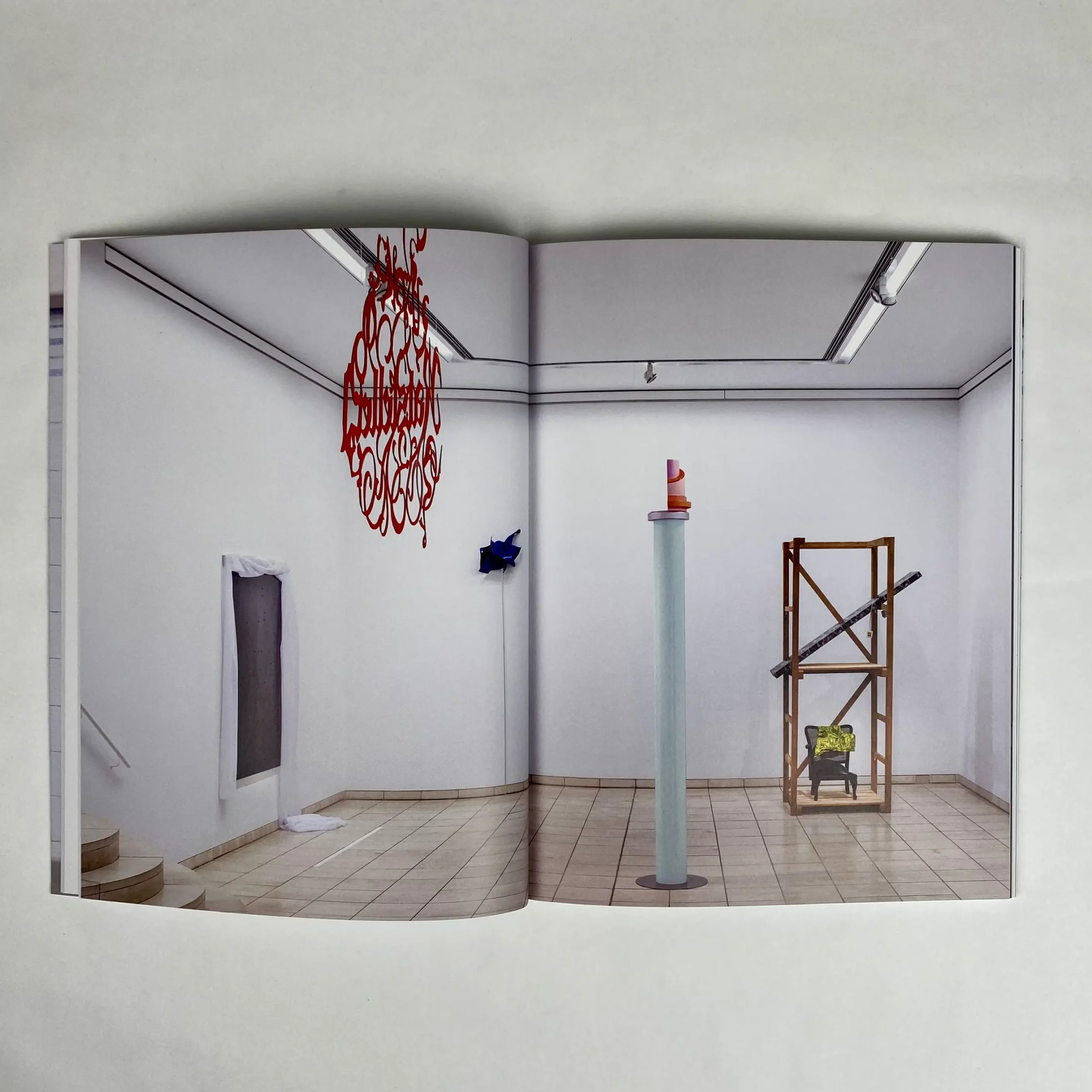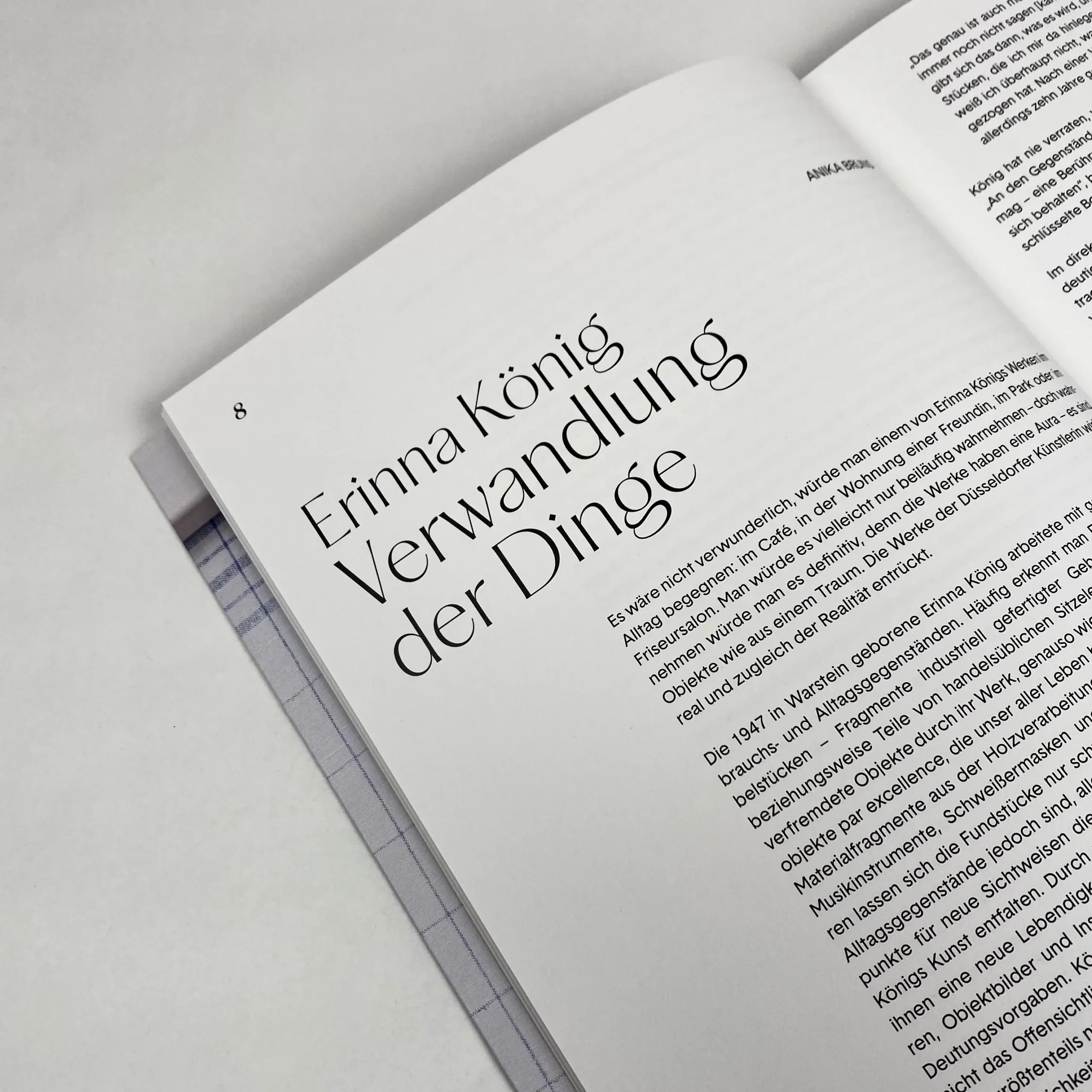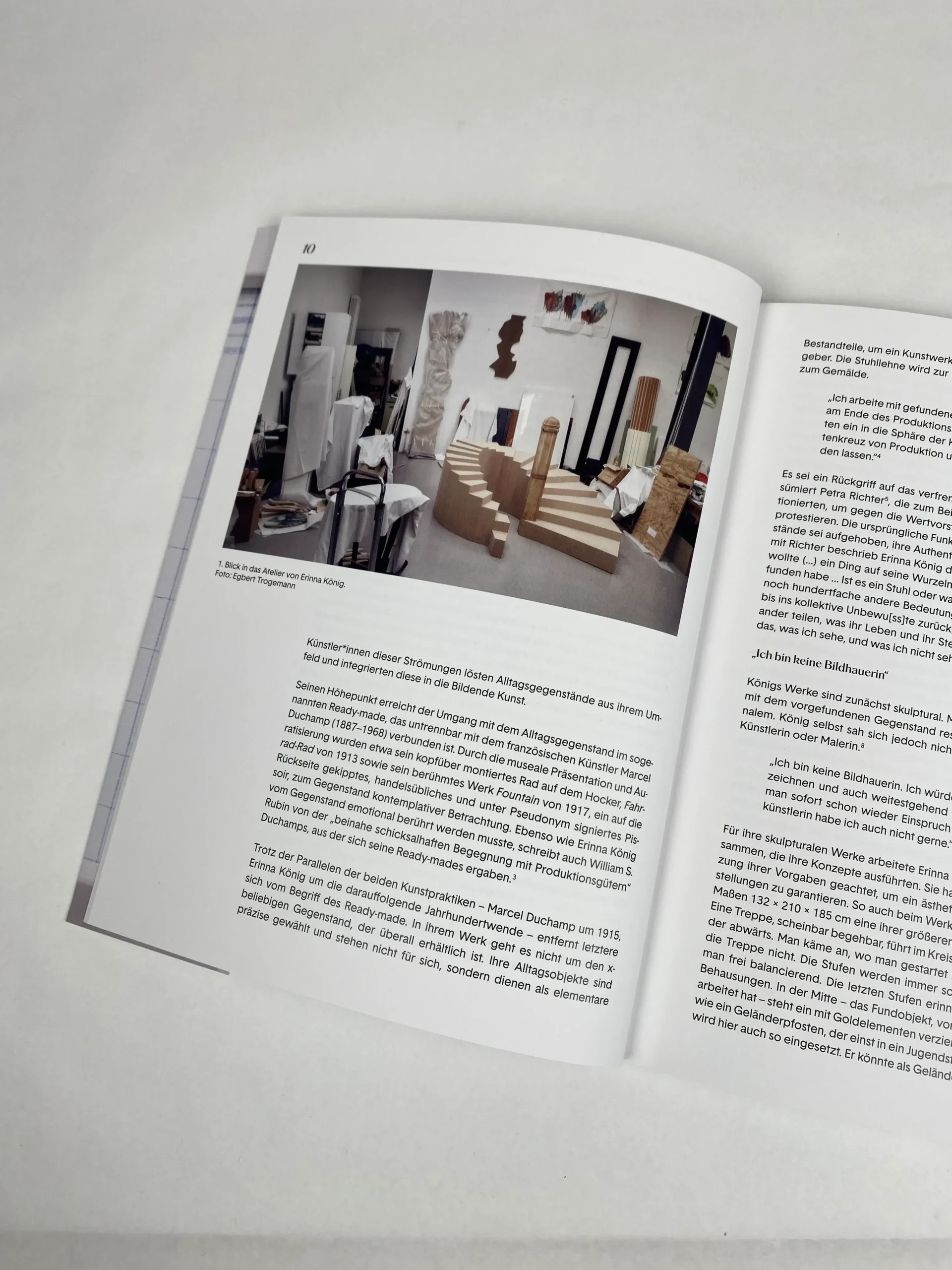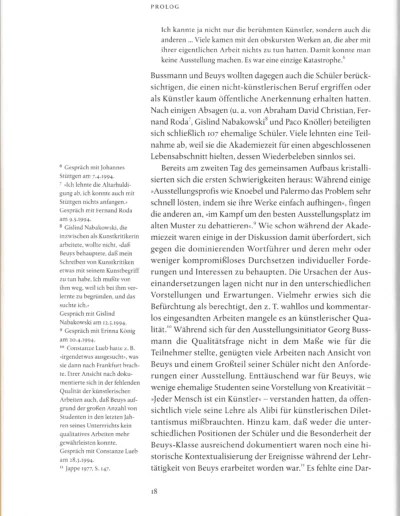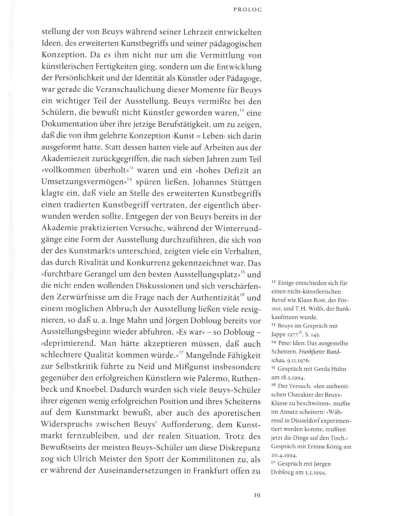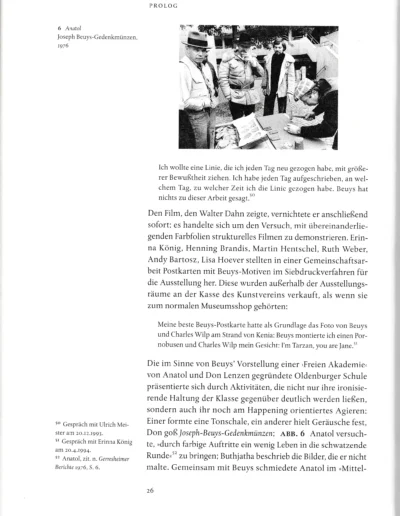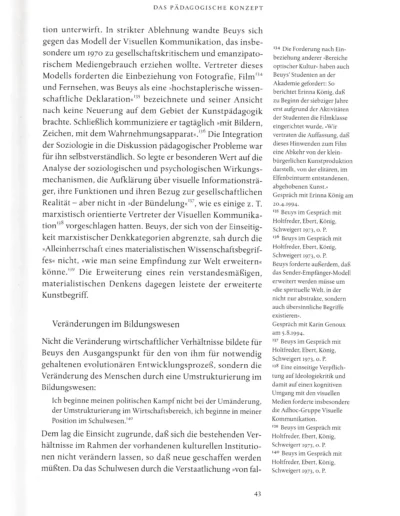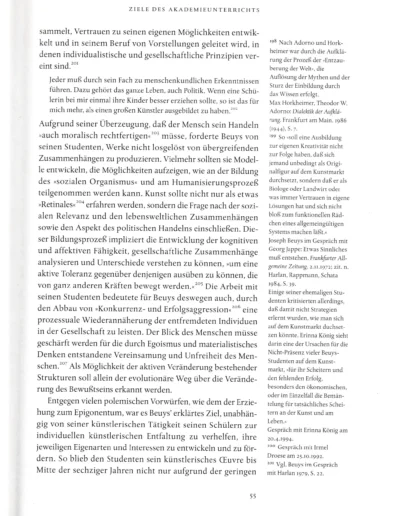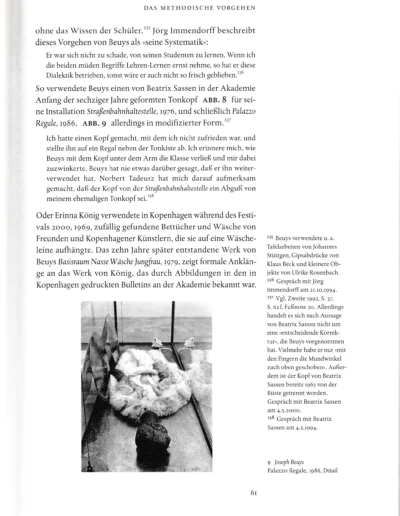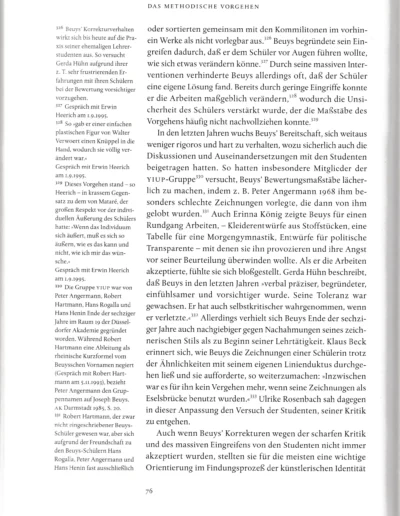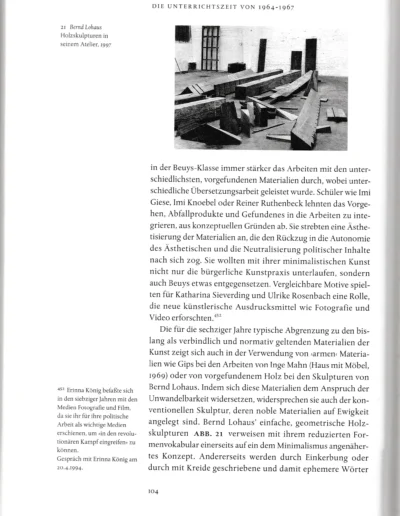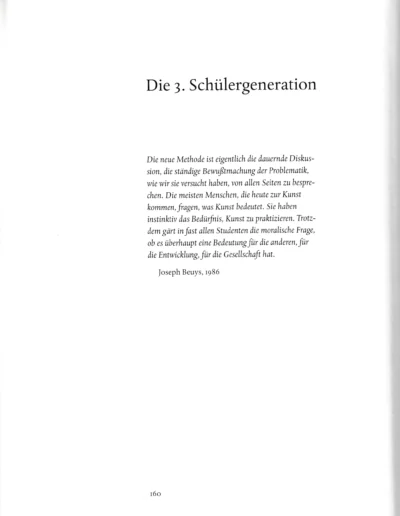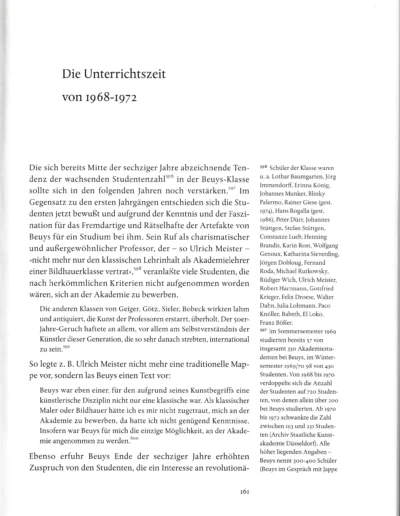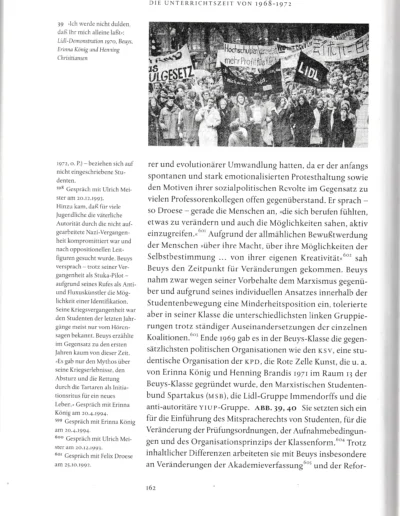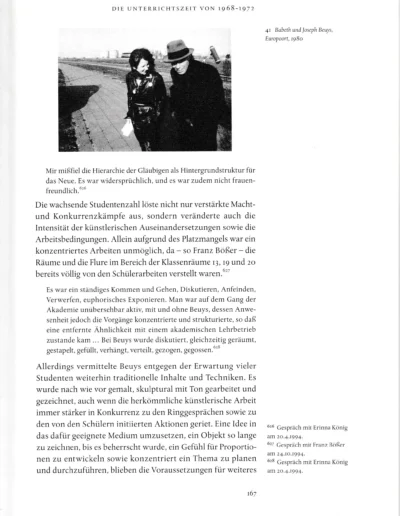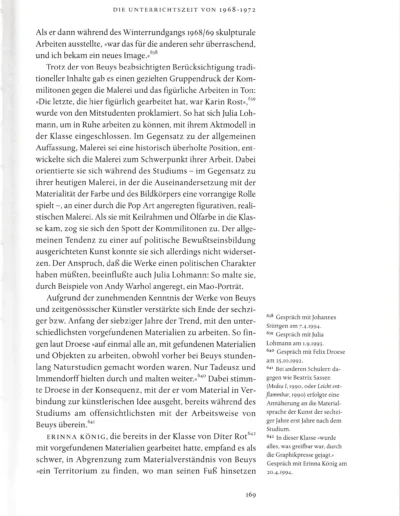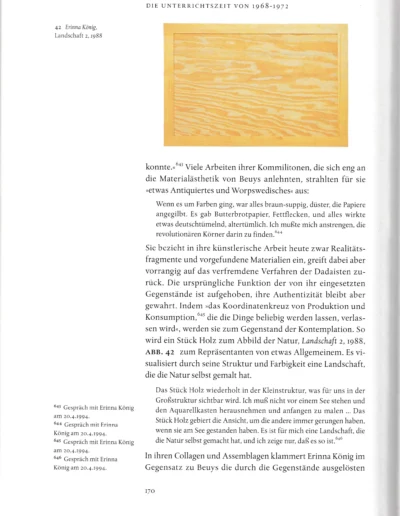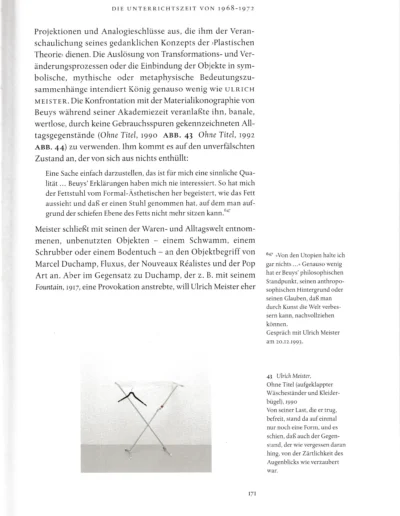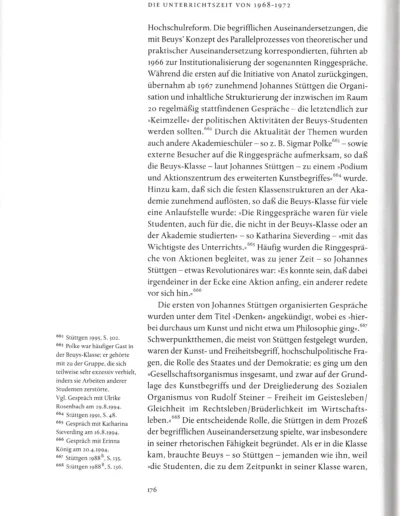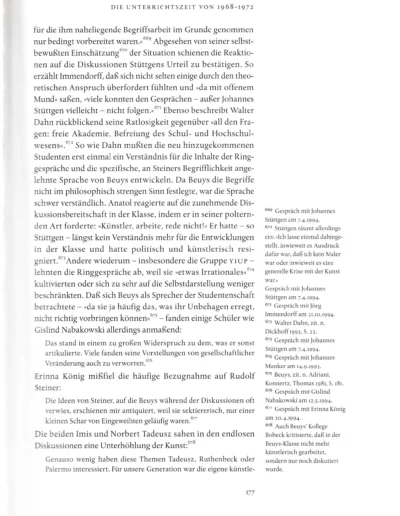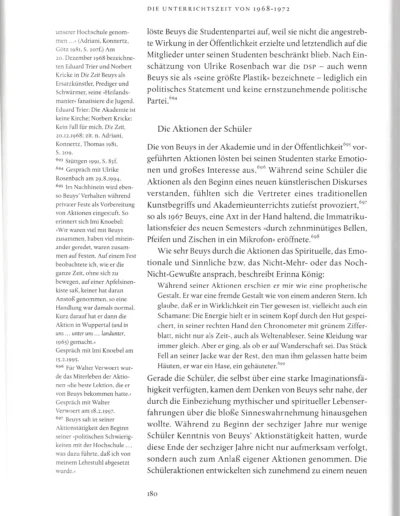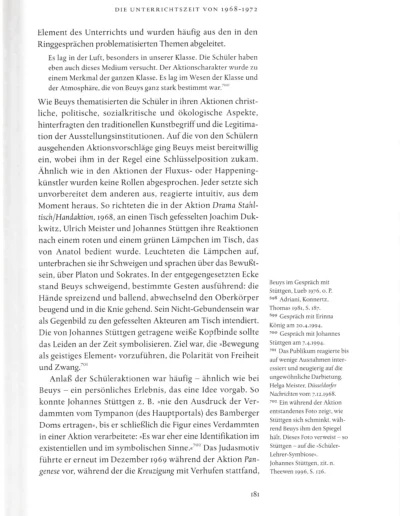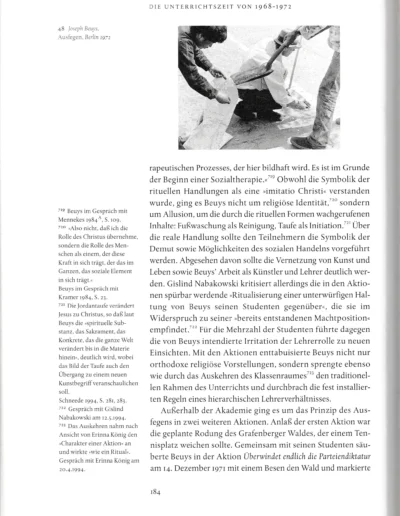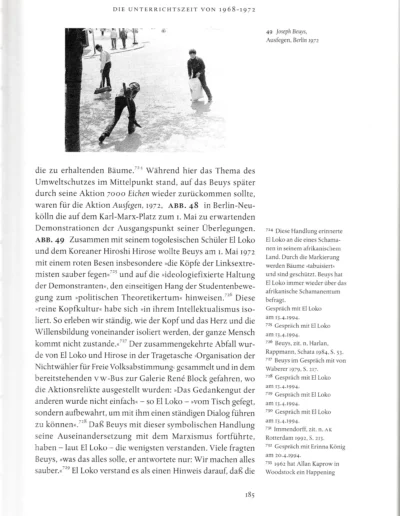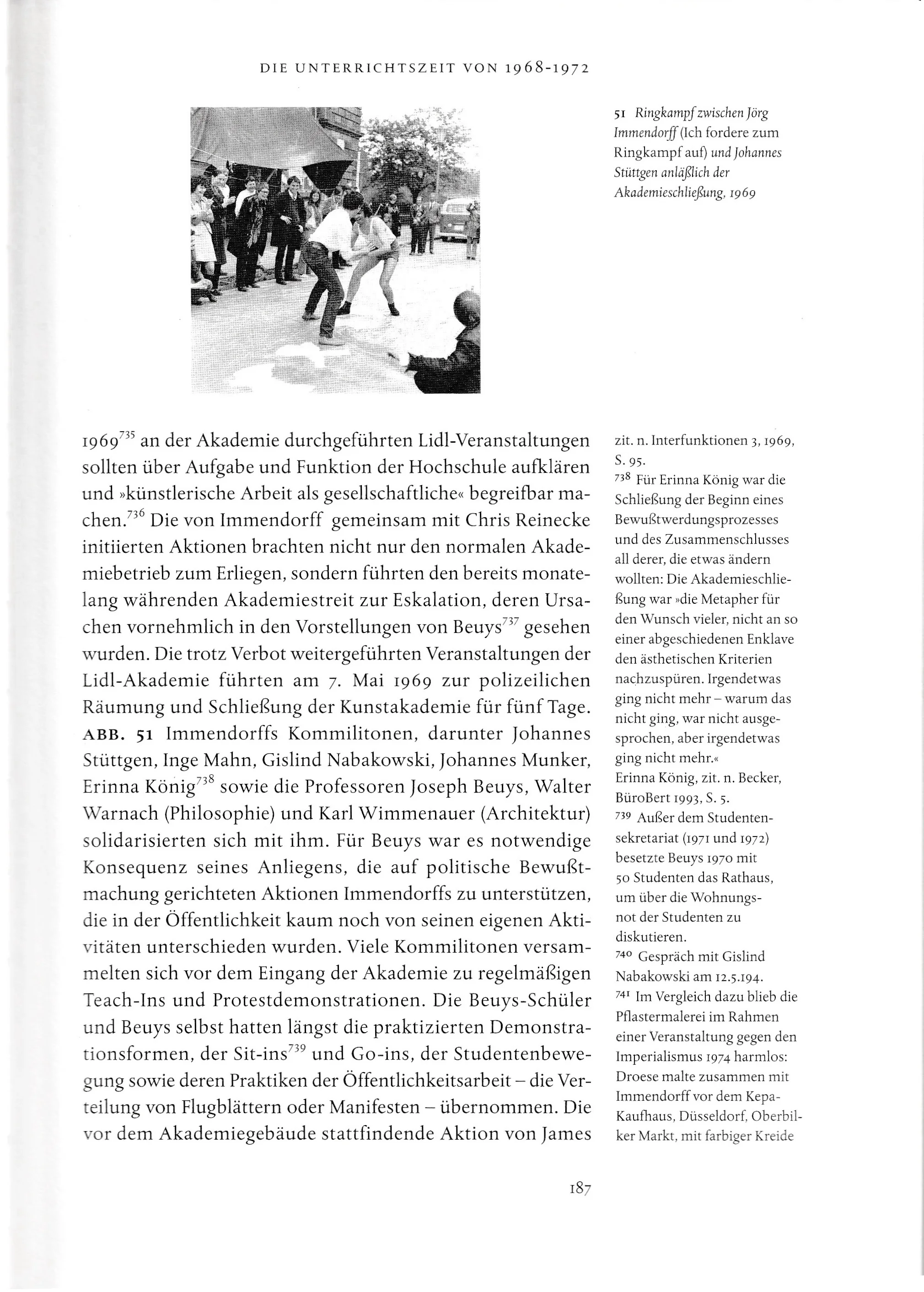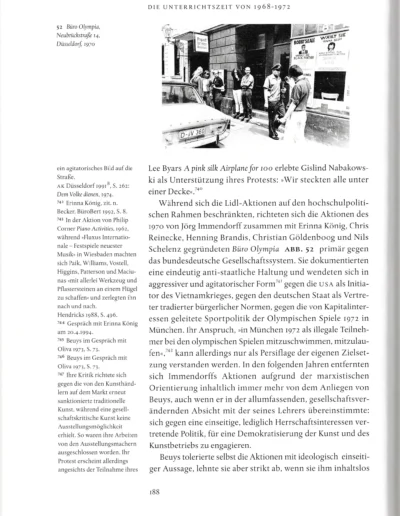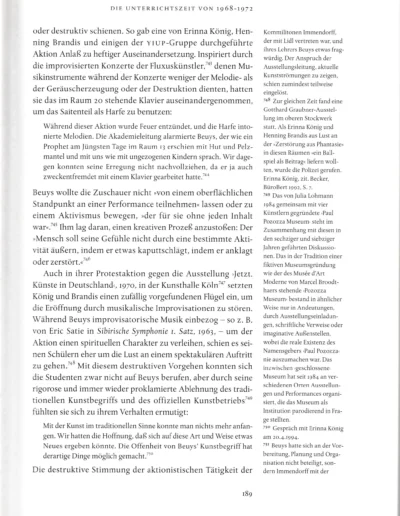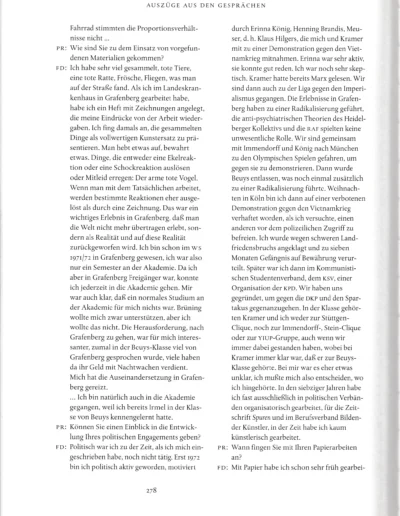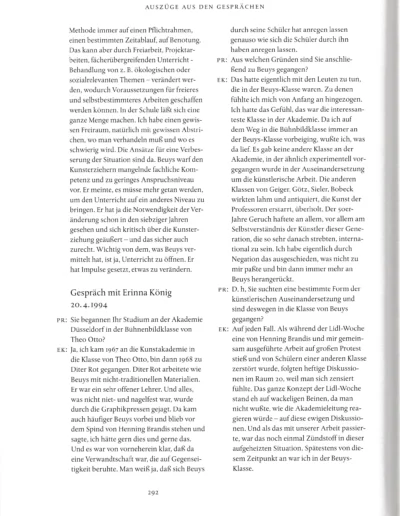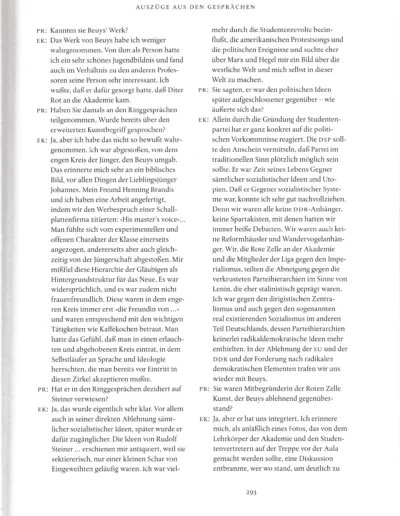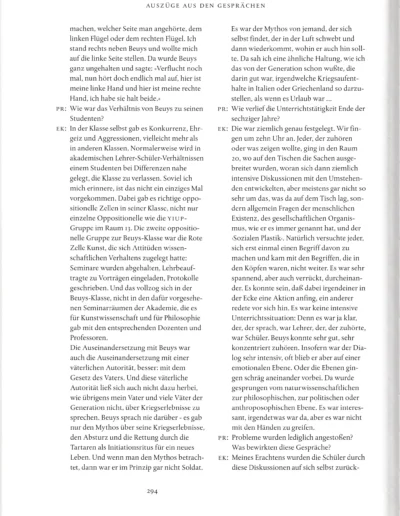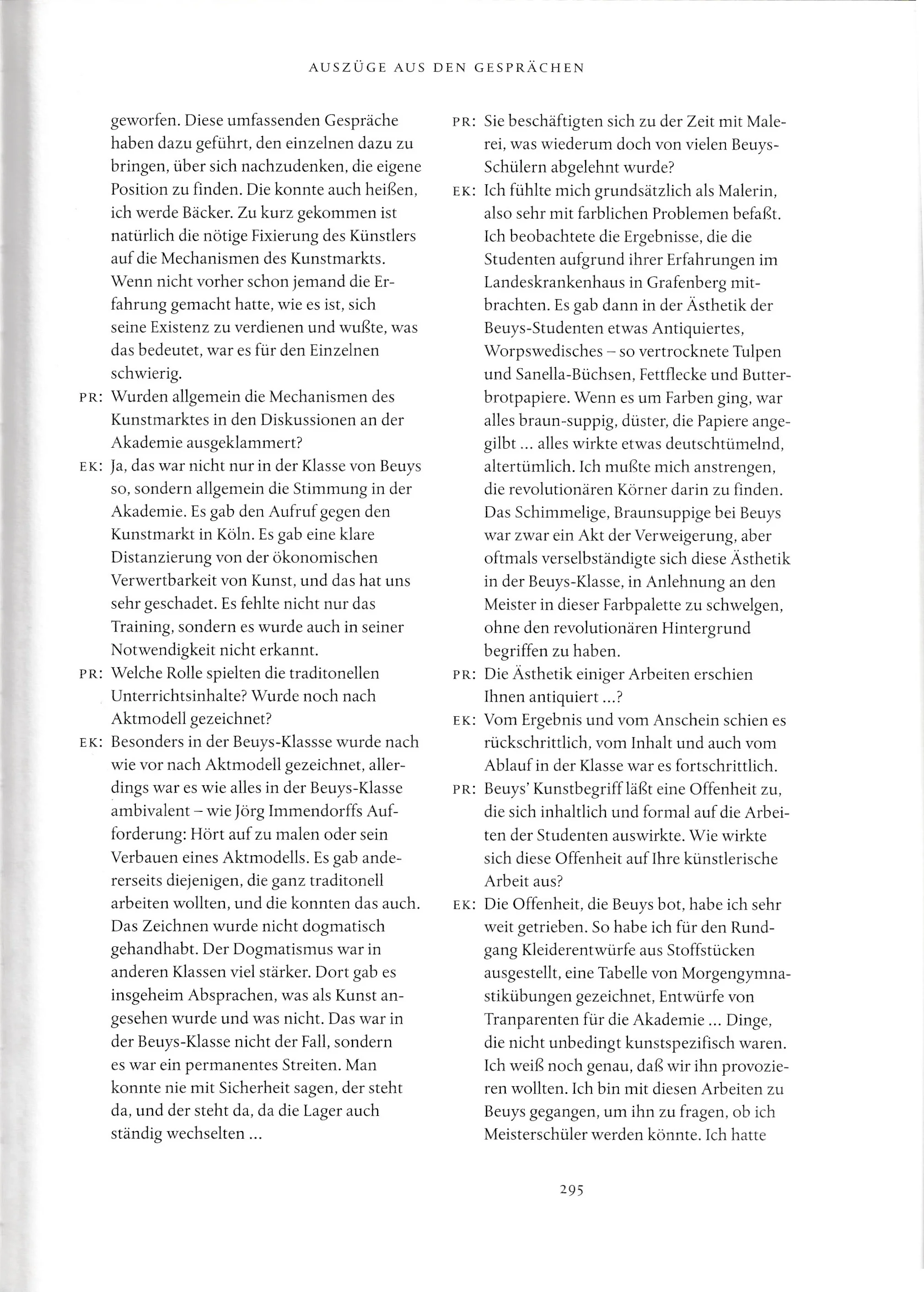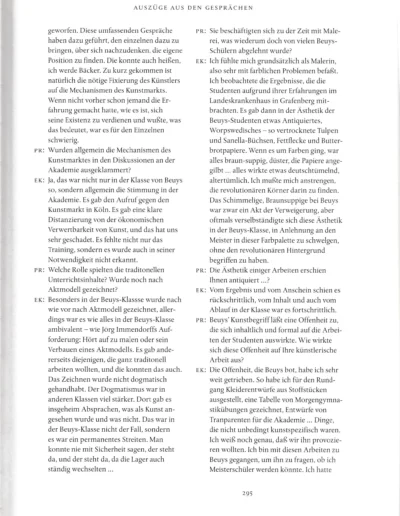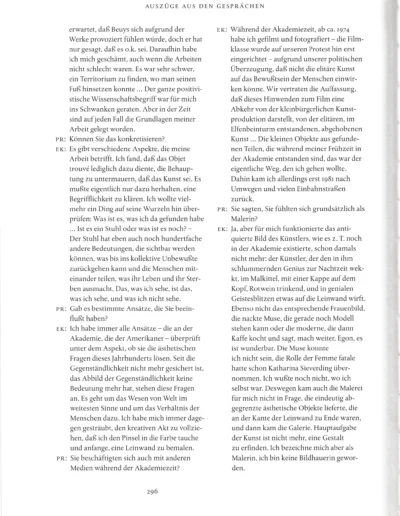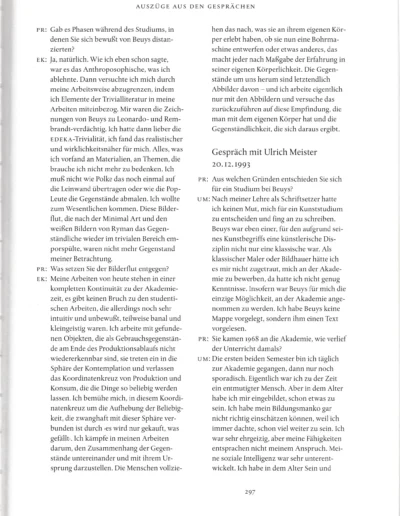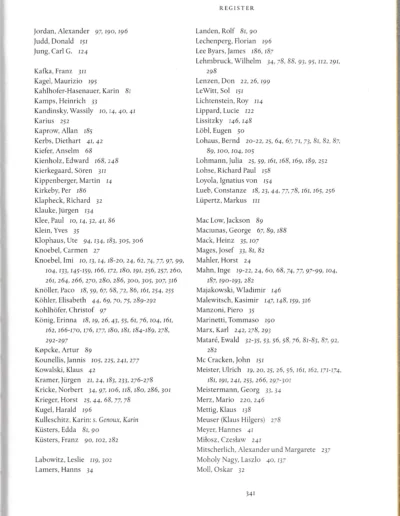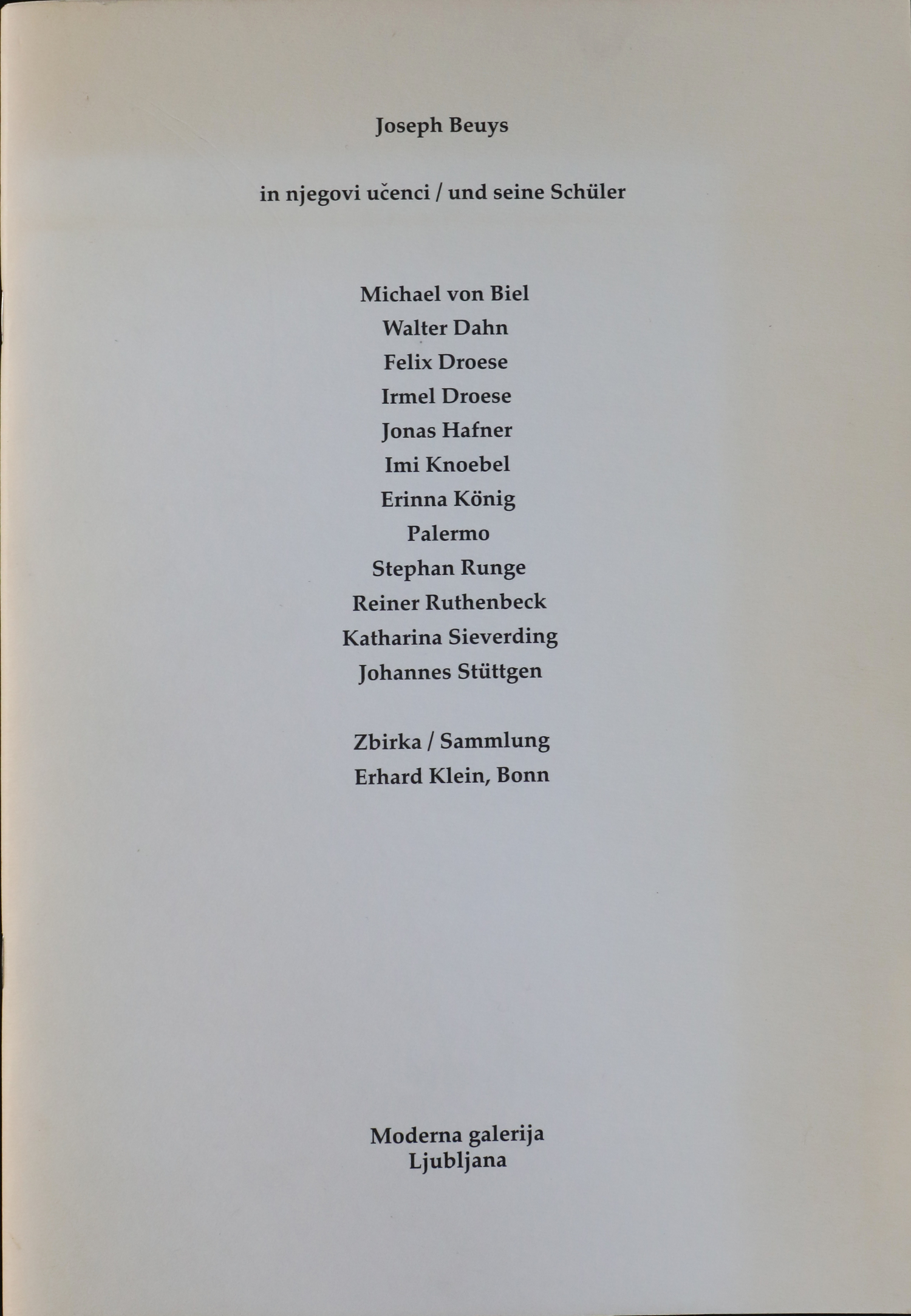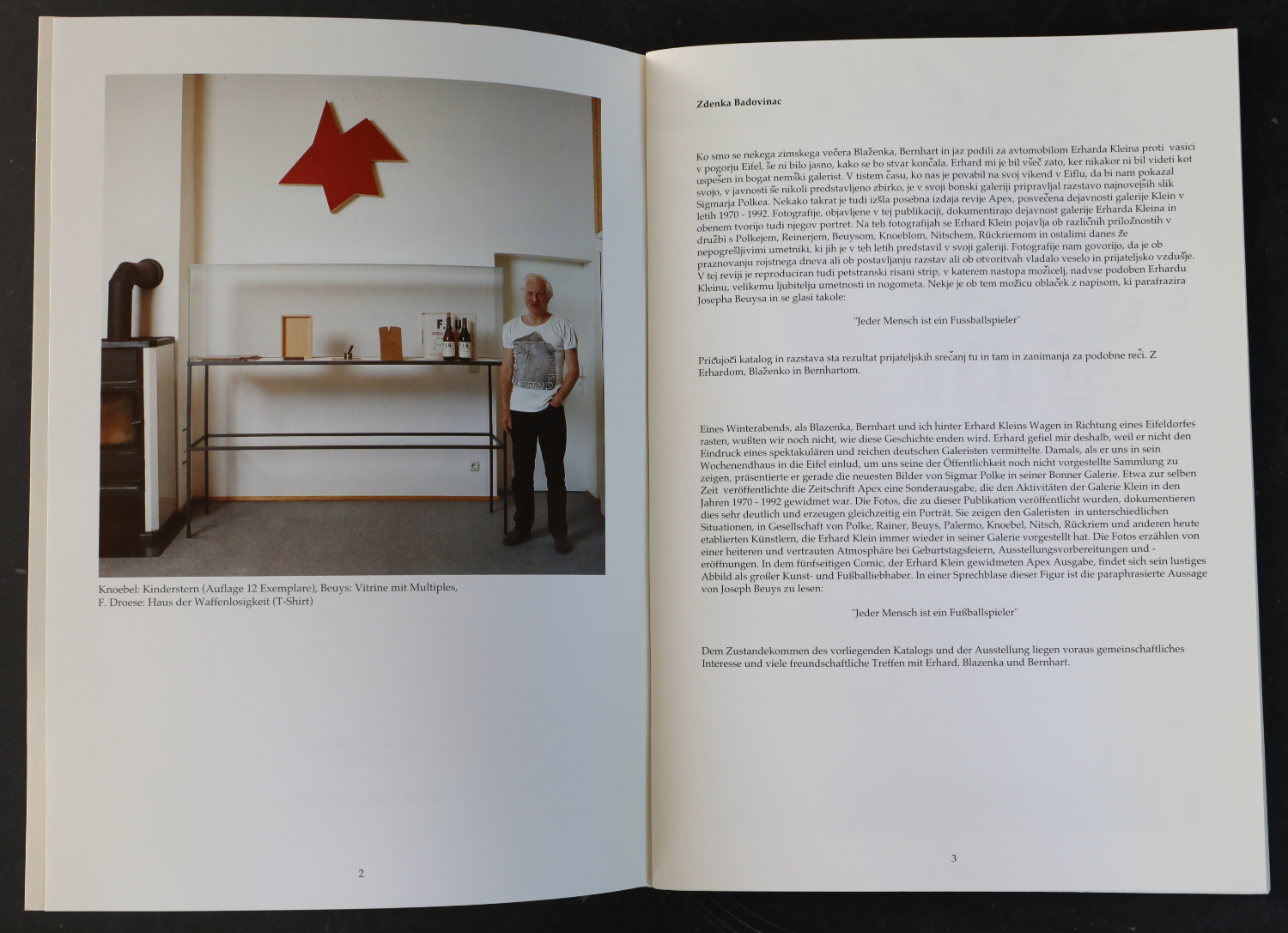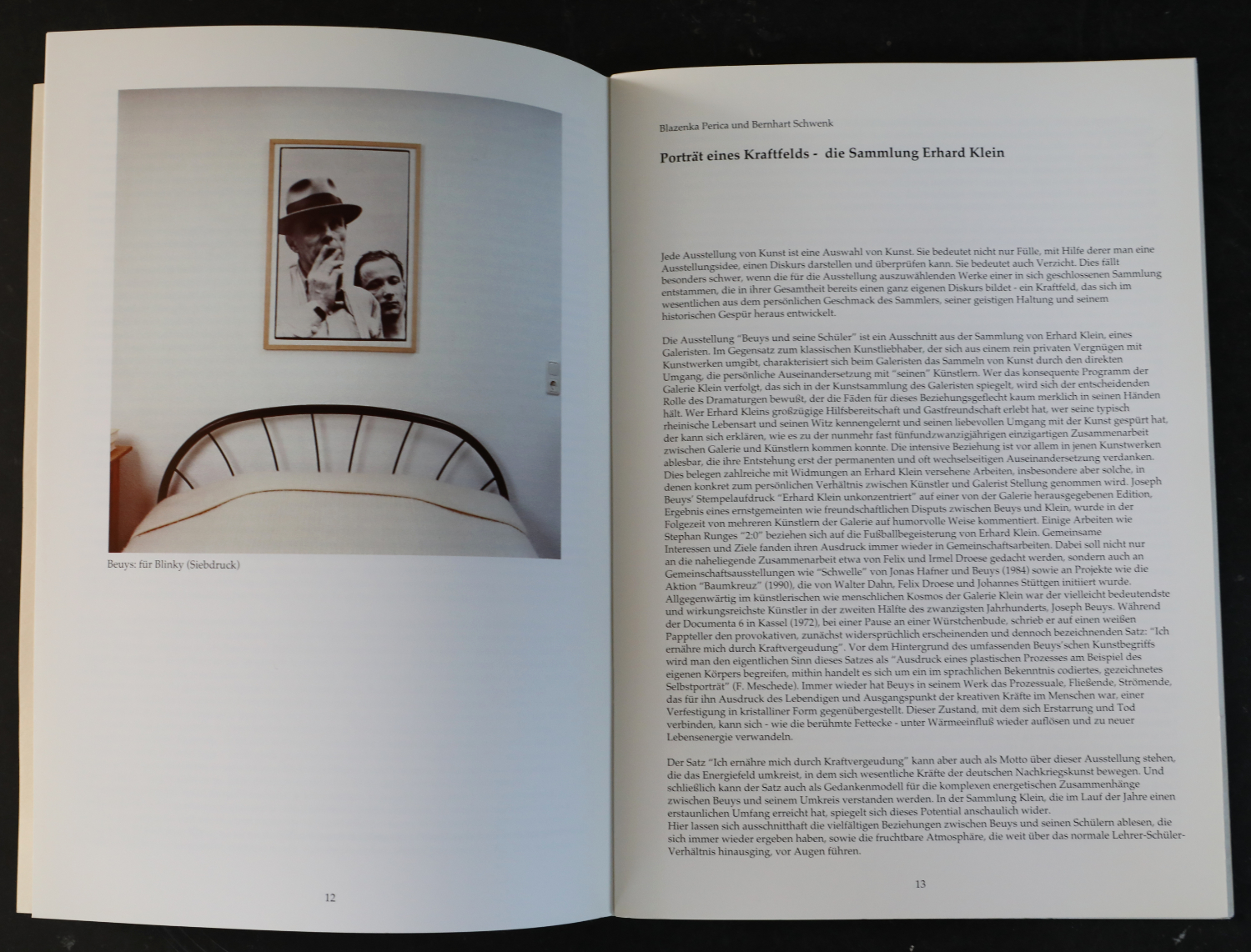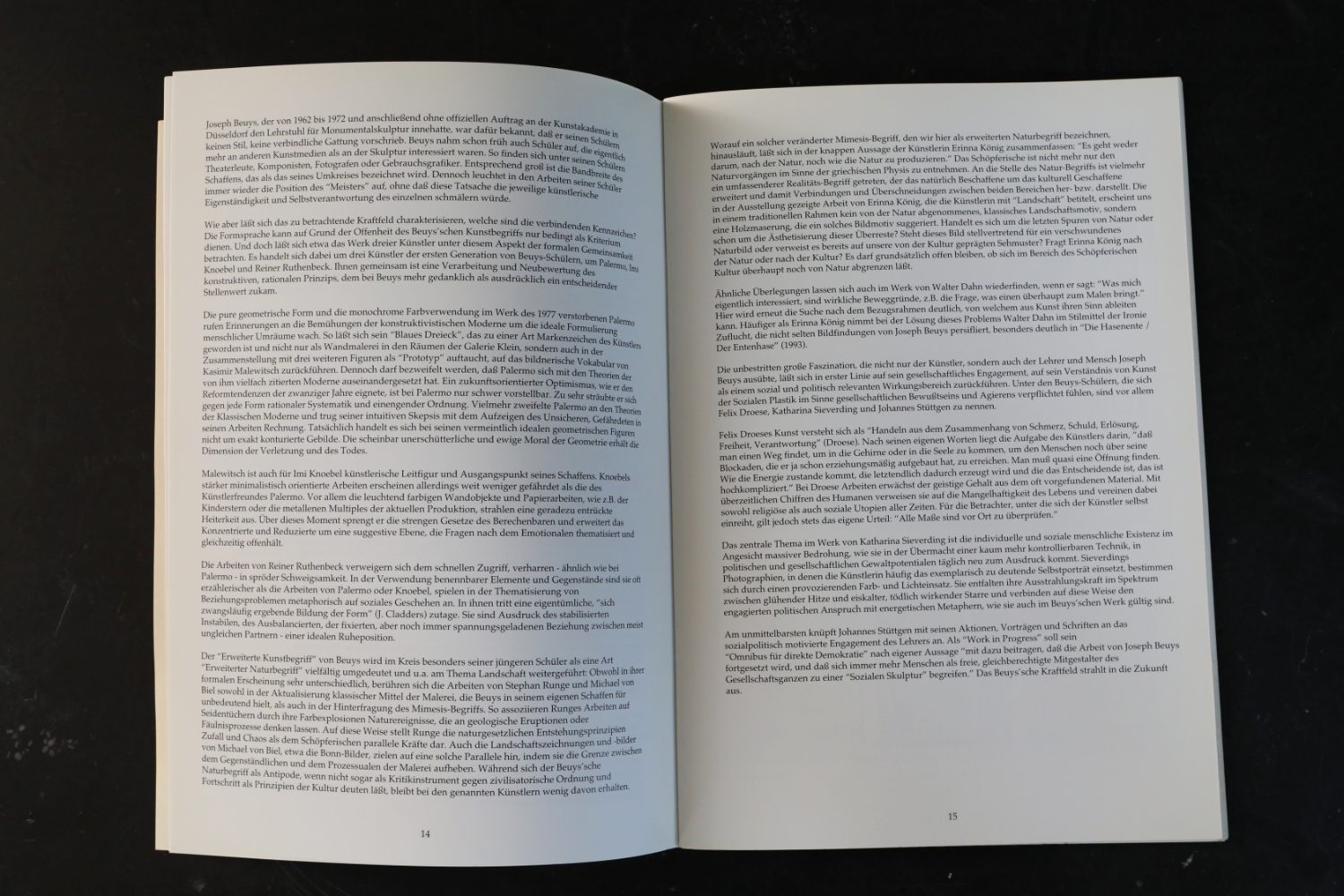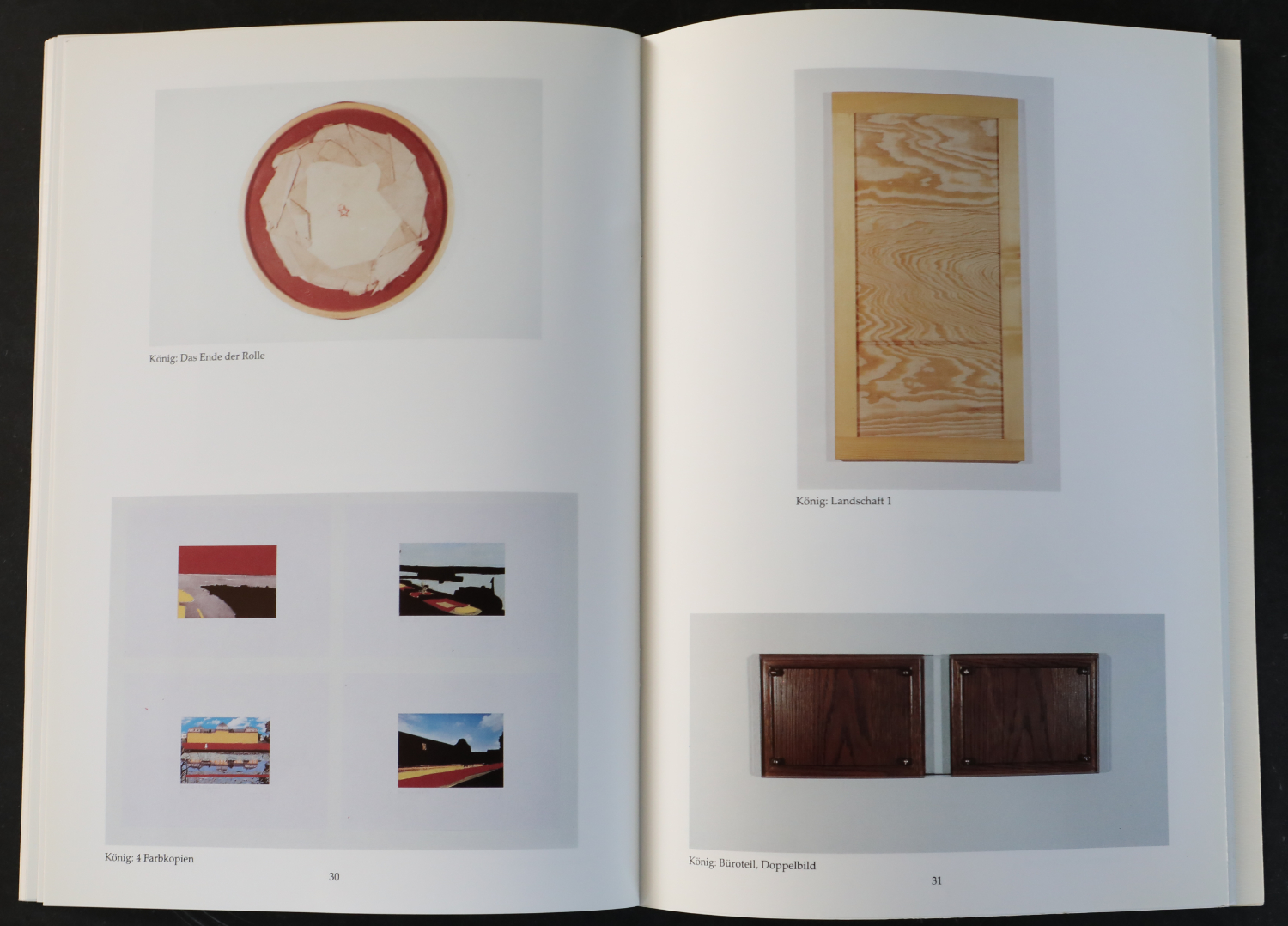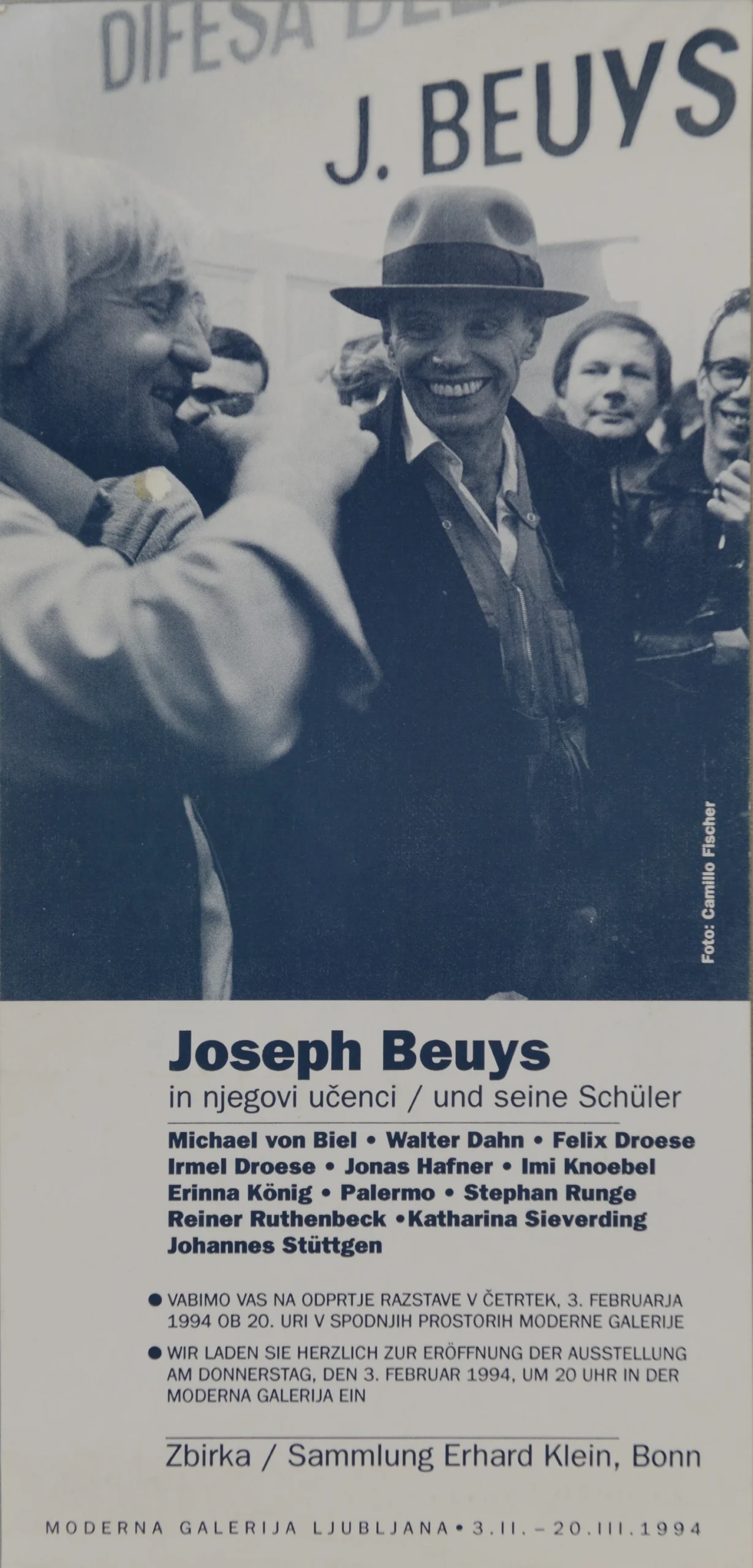Books / Catalogs
Von der Heydt Museum Wuppertal
Catalog Erinna König,
Retrospective Erinna König October 2023–February 2024,
Von der Heydt Museum, Wuppertal
Edited by Roland Mönig
Authors Anika Bruns, Dieter Schwarz
Editors Anika Bruns, Henrike Stein
Design Adeline Morlon
Image editing Henning Krause
Published by Verlag Kettler, Dortmund
© 2023 Von der Heydt Museum Wuppertal, Estate of Erinna König, Authors, Kettler Publishing House.
Photos: © Henning Krause, © Dejan Saric, © Egbert Trogemann, © Nic Tenwiggenhorn, © AntjeZei-Loi, © Von der Heydt Museum Wuppertal
©️ 2023 von der Heydt-Museum, Photo: Adeline Morlon
Mit, neben, gegen.
Die Schüler von Joseph Beuys
In diesem Buch wird zum ersten Ml die Wirkungsgeschichte der Akademietätigkeit von Joseph Beuys aus der Sicht seiner ehemaligen Schüler beschrieben. 1961 als Professor für Bildhauerei an die Staatliche Kunstakademie Düsseldorf berufen, 1972 aufgrund der Auseinandersetzungen um hochschulpolitische Fragen entlassen, gibt Joseph Beuys (1921-1986) als einer der bedeutendsten, aber auch umstrittensten Akademielehrer nach 1945. In seinem Bemühen steht Beuys in der Tradition avantgardistischer Künstler, die sich engagiert für eine auf Gesellschaftsveränderung drängende ästhetische Erziehung eingesetzt haben. Der Erfolg seines Unterrichts schlug sich einerseits in der großen Anzahl der Studenten nieder, andererseits in der großen Vielfalt der künstlerischen und pädagogisch-vermittelnden Positionen innerhalb seiner Schülerschaft. Mit dieser Publikation werden die Erfahrungen und Reflexionen sowie die Erinnerungen ehemaliger Schüler festgehalten. Eine Auswahl der transkribierten Interviews befindet sich im Anhang.
© Copyright 2000
Richter Verlag Düsseldorf,
Petra Richter
Hier Ausschnitte, welche
sich auf Erinna König beziehen:
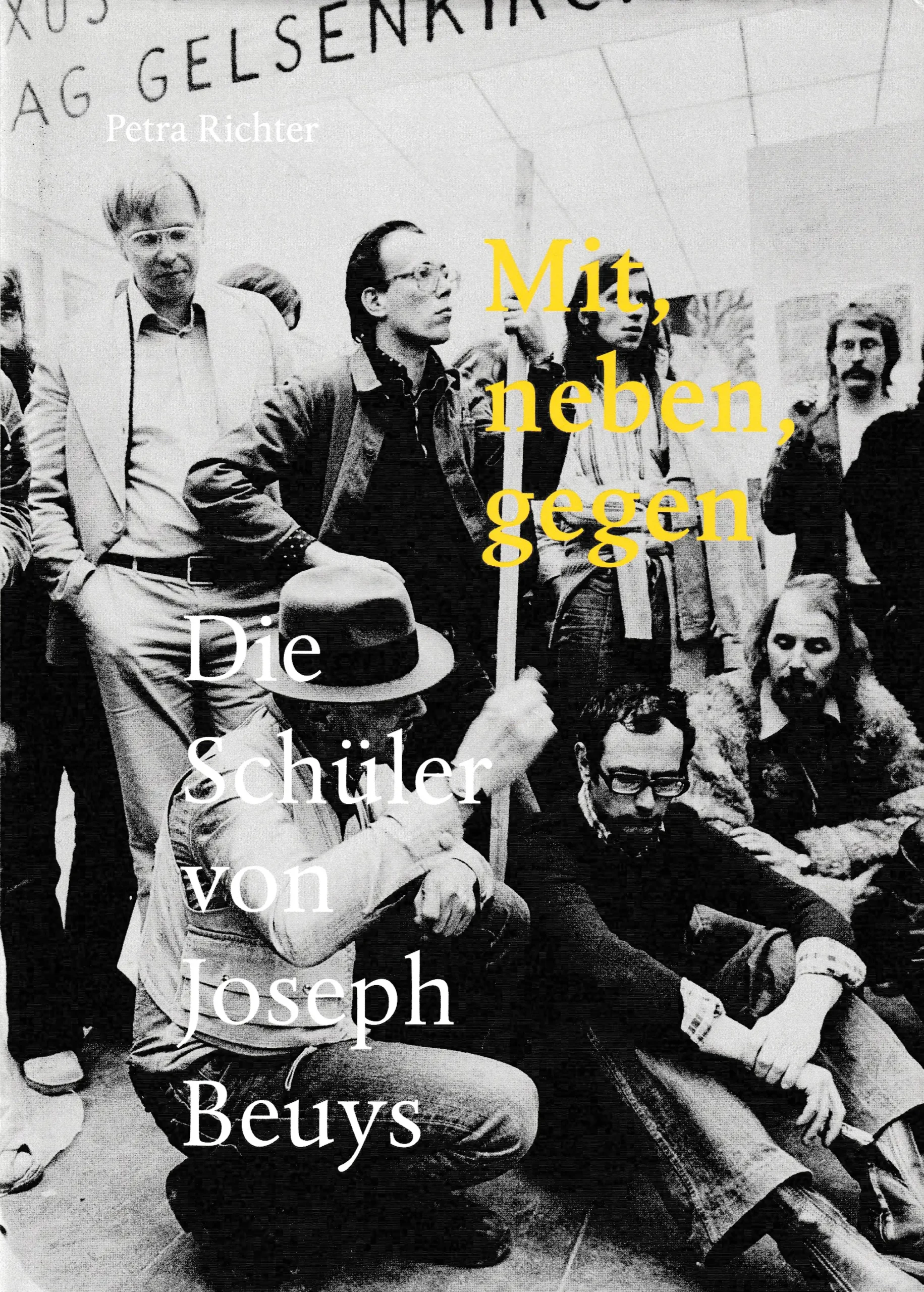
©️ vg Bild-Kunst Bonn 2000
Joseph Beuys and his students
Erhard Klein Collection, Moderna Galerija Ljubljana
Blazenka Perica and Bernhart Schwenk
Portrait of a force field – the Erhard Klein Collection — (excerpt)
[…] Beuys' “expanded concept of art” is reinterpreted in many ways, especially by his younger students, as his “expanded concept of nature” and continued, among other things, in the theme of landscape: Although very different in their formal appearance, the works of Stephan Runge and Michael von Biel are similar in their updating of classical means of painting, which Beuys considered insignificant in his own work, and in their questioning of the concept of mimesis. Runge's works on silk scarves, with their explosions of color, evoke natural phenomena reminiscent of geological eruptions or processes of decay. In this way, Runge presents the natural principles of chance and chaos as forces parallel to creativity. Michael von Biel's landscape descriptions and images, such as the Bonn pictures, also point to such parallels by removing the boundary between the representational and the processual in painting. While Beuys' concept of nature can be interpreted as the antithesis, if not a critical instrument against civilizational order and progress as principles of culture, little of this remains in the work of the artists mentioned above.
What such a changed concept of mimesis, which we refer to here as an expanded concept of nature, amounts to can be summarized in the concise statement by the artist Erinna König: “It is neither about producing according to nature nor like nature.” Creativity is no longer derived solely from natural processes in the sense of the Greek physys. Instead, the concept of nature has been replaced by a comprehensive concept of reality that extends the natural to include the cultural, thus creating and representing connections and overlaps between the two areas. The work by Erinna König shown in the exhibition, which the artist has titled ‘Landscape’, does not appear to us in a traditional context as a classic landscape motif taken from nature, but rather as a wood grain that suggests such an image motif. Are these the last traces of nature or already the aestheticization of these remains? Is this image representative of a vanished image of nature, or does it already refer to our culturally influenced patterns of perception? Is Erinna König questioning nature or culture? It can remain fundamentally open whether the realm of creative culture can still be distinguished from nature at all.
Similar considerations can also be found in the work of Walter Dahn when he says: “What really interests me are real motivations, e.g. the question of what actually makes you want to paint.” Here, once again, the search for a frame of reference from which art can derive its meaning becomes clear. More often than Erinna König, Walter Dahn resorts to irony as a stylistic device to solve this problem, often satirizing Joseph Beuys's imagery, particularly evident in “Die Hasenente/ der Entenhase” (1993). […]
—
Photos: Norbert Faehling
Text editing: Blazenka Perica, Erhard Klein
Overall production: Apex, Cologne
© Moderna galerija, Llubljana + Erhard Klein, 1994
